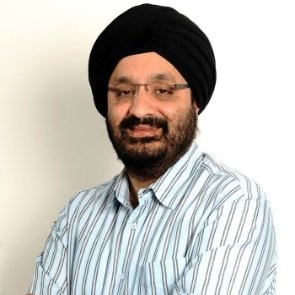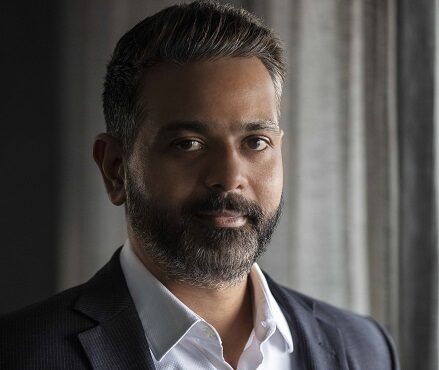The Language Revolution: How Generative AI is Transforming Industries and the Future of Work

CXOToday has engaged in an exclusive interview with Jaspreet Bindra, Founder, Tech Whisperer, UK
- Can you explain how generative AI differs from traditional search algorithms and why it holds the potential to revolutionize various industries?
Generative AI is a part of AI overall, but it’s just done in a very different way.
The big difference between generative AI and traditional AI, which was largely Machine Learning or deep learning or Natural Language Processing (NLP). The big difference is that generative AI is built on language. And this is very significant because language is something which, according to scholars like Noam Chomsky, actually separates human beings from other animal species. It is language which made Homo sapiens what we are. And here is something which is actually trained on language.
So, Generative AI Transformers or Large Language Models (LLMs) like ChatGPT, etc. are trained on massive, huge, data sets comprising words, sentences, paragraphs and videos and other forms of language. And it is a huge database. For example, GPT3. And remember, GPT 3 is two generations behind GPT4. In the middle was GPT3.5, which was trained on such large data sets that all of Wikipedia was just 0.6% of the entire mass of language that GenAI was trained on. Because it is trained in language and the way it is trained is like they are the world’s most powerful – sometimes called the world’s most powerful autocomplete technology – and much like autocomplete in search where and if you start typing something it predicts the next word. Similarly, in these models, basis the huge amounts of training that they have had, they probabilistically predict the next word after you’ve typed the prompt, and then the word after that and the word after that, sometimes being therefore called the world’s most powerful or complete technologies.
It is also because of this that it thinks up and makes up things as it goes along. It sometimes hallucinates. It is not entirely factual. In fact, it is very much like how a human being learns and that is the core difference. The way this is trained is very different from the typical data-driven training of ML. Thus, the use cases are very different. In ML, typical AI, the use cases are to as accurately as possible predict what what would happen in the future, say a sales prediction or prediction of the price of something. But in this case, it is about generating new language, new things. One of the ways to visualise it is that if the typical AI – not Generative, but other AI – is shown a picture of a dog, it will accurately identify it and say it is a dog. While in GenAI, if you show it a picture of a dog what it will generate is a new picture of a dog.
So, this generates new pictures, new ideas, new text, new language, new copy, new marketing briefs. And that is how it really is different from traditional AI.
It is also different from traditional search algorithms. Search is based on very structured data sets and huge amounts of facts across the Internet which have been collected and put together as huge data sets, as tables. Search engines will pull out actual, factual information, while GenAI is not about factual information – it is supposed to generate new information. As Shanpuri who writes a lot on Twitter, said very evocatively that Google is a search engine while Chart GPT is a thought engine. They are very different.
- What are the most essential skills for succeeding in the future of work, given the impact of AI, automation, and remote work, and what do you imagine the future of work will look like?
Work will change a lot because of because of GenAI. If you think about work, what is work? Work is where you either act as something or you create a new thing, or you format as something else. So, you act as a doctor or as a scientist or as an office worker. You create a new document or code or recipe. And GenAI would be able to help us create a lot of things.
Then you communicate, you format something such as a PowerPoint presentation or as a Word document or as a list and this can very easily be done by GenAI. That part of it could potentially be substituted by GenAI. But the true creative part – where we act as a doctor or act as a nurse or act as a teacher, is something which will continuously remain human. Work will change a lot with GenAI working with us not as a pilot, but as a co-pilot.
Microsoft famously has brought out all these new programs – co-pilots – which can just do almost miraculous stuff. You have a 40-page Word document, which can be converted on the fly into a 10-page PowerPoint, and then, you can play around with it, tweak it, you can change the tone, the length, create new slides by text prompts, etc. Massive Excel sheets can be immediately summarised in five bullet points. Productivity software like Microsoft’s and others changed work. I think that generally has a similar potential to completely change work.
- Some individuals express concerns that AI might replace human creativity and innovation. How do you envision the relationship between AI-generated content and human ingenuity?
People do have this concern that AI might replace human creativity and innovation. I really don’t think so. I think it can just help us innovate and create much faster, much better. If I have to create an announcement for a class that I’m teaching, earlier on, I would have had to sit down with a blank sheet of paper, get some inspiration which would take time and then, write stuff. Sometimes I would like it and sometimes, I would not. I would keep on writing. It would take me hours. Now I ask ChatGPT to create a 300-word announcement, give it the right kind of prompts and it creates something for me. I can use it to create five different kinds of announcements and then I work upon it and create something that I like and that takes less than 15 minutes. The same is true for creating things like websites and recipes. It is a very powerful co-pilot to help us become more creative.
Artists can use it brilliantly. Adobe Firefly, which is built on traditional Photoshop, with GenAI added in, which can help visual artists become that much better. The good artists will become better, while the not-so-good ones could, potentially, get substituted.
- With the rapid advancements in AI, how can individuals and enterprises best embrace this technology to ensure they stay ahead, and what might be the consequences of resisting its adoption?
Lot of times people resist innovation – they did it with the steam engine, with calculators, etc. In India, there were vast protests against computers taking jobs. At the end of it, what has happened is that it has created all of these new skills, new jobs – in fact, created more jobs than they supposedly destroyed. The net job creation is always more.
- As we look to the future, what steps do you believe are essential for individuals and businesses to take in order to fully harness the power of generative AI while also addressing any challenges that might arise?
A lot of people say that GenAI will take away their jobs. My very strong view, however, is that GenAI will not replace human beings, but someone using GenAI will. So, we have to learn to use GenAI. A very famous software programmer, Kent Beck, put it brilliantly when he confessed that he had been reluctant to use ChatGPT – he is such a brilliant programmer, that he didn’t want something else to come in and do stuff that he does. But he said that after he tried it, he knows what the fuss is all about. He said – 95% of my skills are useless, but the other 5% has gone up 1,000x. You can be a much better programmer using ChatGPT, GitHub, Co-pilot or some of these programmes which are coming up. For that, we must embrace these technologies, rather than resist them.
I teach students at Ashoka and various other universities, and I see them embracing these technologies and becoming better students than what they were.
- You mentioned the emergence of new verticals within generative AI. Could you provide some examples of these verticals and the potential impact they could have on various sectors?
I do not see new verticals coming up with GenAI. AI and GenAI are horizontal technologies, much like electricity, they will help multiple industries. They are not likely to disrupt every industry – in most verticals AI and GenAI will be assistive. In a very few, it could be disruptive. It will make us more efficient, creative, productive. There are industries like software programming, marketing, some creative industries, contact centres and call centres where GenAI has the potential of disruption, and we will see some of this play out.
- How do you foresee gen-AI creating an impact on the BigTech industry landscape?
The BigTech industry landscape is very interesting. I do believe that it is going to reshape BigTech. In fact, it has already reshaped BigTech. There is a new entrant in BigTech called NVIDIA. Only on the back of GenAI, it has grown to a $1.2 trillion company (when I last checked). It is also probably going to reshape BigTech with people who embrace this getting even bigger. One of the companies that has been fastest off the block has been Microsoft which, along with OpenAI, has just infused GenAI into every product, and is creating amazing new products – at scale – using GenAI. Google has been a little slower, though GenAI was “invented” in Google with the famous paper attention is all you need. It saw it as a threat to its amazing business model of search and it was slowed down. But now, Google has also brought its amazingly powerful AI juggernaut, including DeepMind, into bringing it out and remaining in front of the race. Apple, as we know, is working on it. Apple is likely to use EdgeAI by putting it into its devices. Amazon’s play will be far more enterprise, along with AWS. Meta has adopted an open-source route and is riding the AI/ GenAI wave to remain relevant and powerful and be a part of the BigTech revolution.
All of them are riding on it knowing that this is a huge wave that they cannot miss, knowing that they will be ‘has beens’ if they don’t adopt it.








